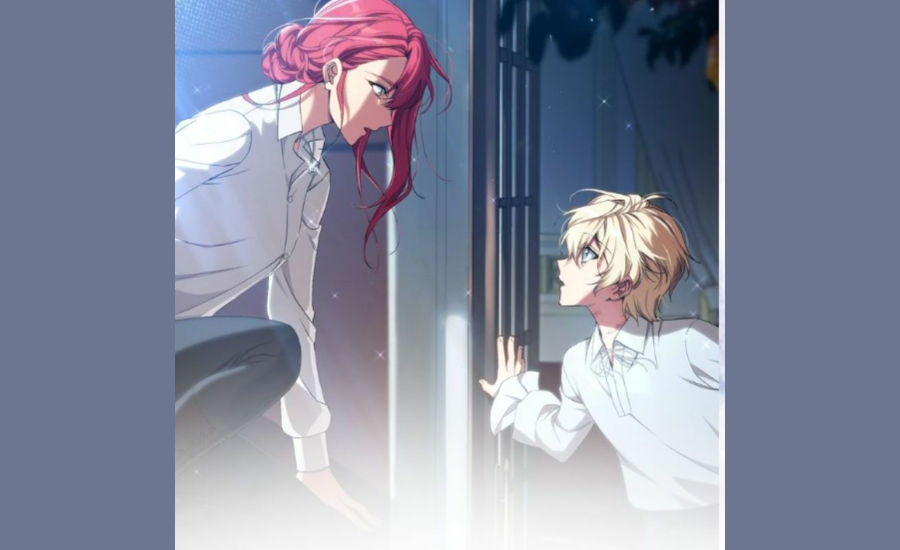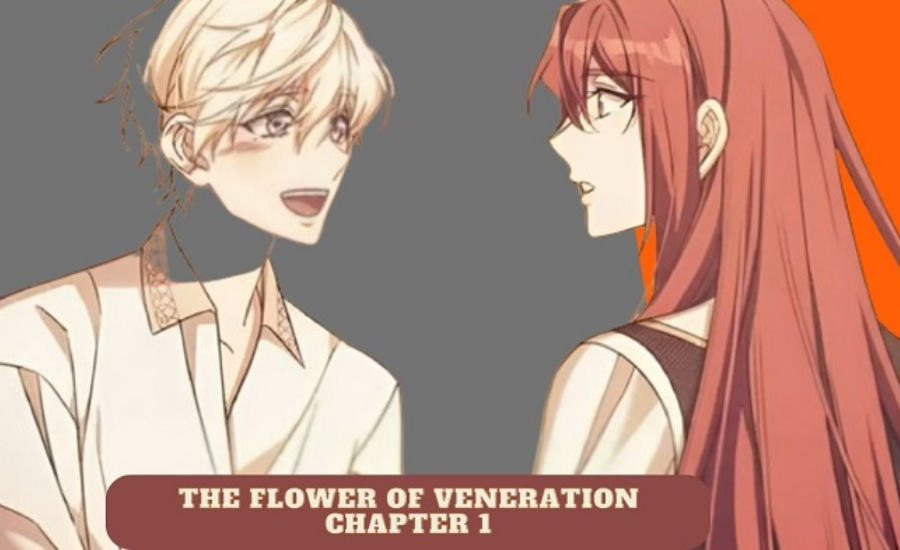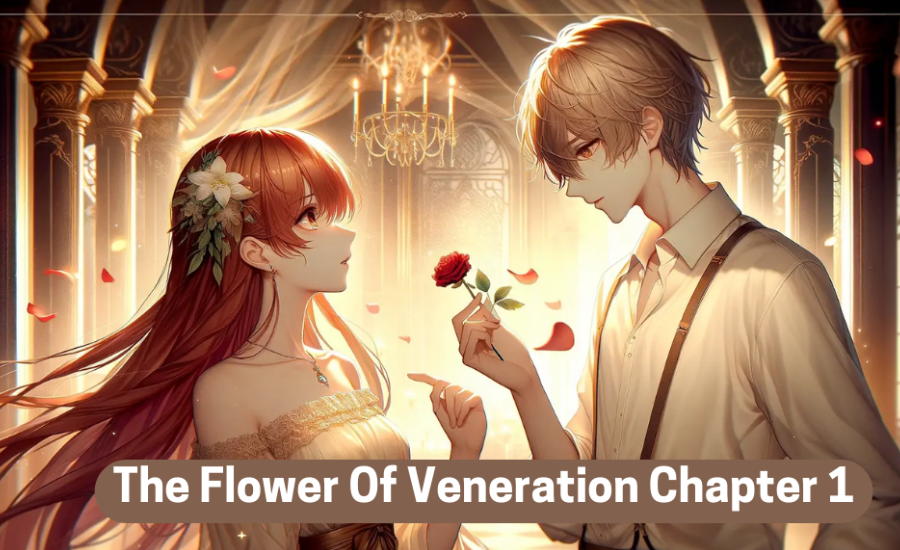The Flower of Veneration Chapter 1 introduces readers to a poignant world where flowers are not merely natural adornments but symbolic representations of emotions, life’s trials, and the enduring spirit of resilience. For those who deeply connect with nature, especially trees and flowers, their purity of mind remains intact, even in the face of life’s darkest hardships. The narrative reveals how flowers serve as a profound metaphor for the emotional landscape of the protagonist, Manta, a young girl grappling with the sudden and tragic loss of her father, Illid G. Sarian. The blooming of colorful flowers around her symbolizes the intensity of her grief, anger, and the desire for vengeance, reflecting the tumultuous emotional storm within her. These flowers, vibrant and fragrant, contrast with the sorrow she feels, offering a complex layer of comfort while amplifying her emotional turmoil. The blending of mystery, adventure, and floral symbolism creates a compelling narrative that speaks to the complexities of mourning, emotional growth, and healing.
Core Themes of The Flower of Veneration Chapter 1
At the core of The Flower of Veneration Chapter 1 lies a deep exploration of grief, loss, and personal transformation. The author skillfully portrays Manta’s emotional journey as she mourns her father’s sudden passing. Manta, once a child surrounded by her father’s cold and distant presence, now faces the world without the only person who had the power to influence her future. His unexpected death leaves her questioning her place in the world and her ability to trust the world around her. Flowers, used throughout the narrative, symbolize this emotional spectrum—from the dark and sorrowful black roses representing misfortune to the peaceful white flowers symbolizing hope and eventual peace. The choice of flowers as metaphors for these emotions not only enhances the story’s emotional depth but also invites the reader to reflect on how the natural world mirrors human experiences. As Manta struggles to find her way, these floral symbols evolve, helping her navigate her complex emotions.

Early Life of the Protagonist – The Flower of Veneration Chapter 1
The opening of The Flower of Veneration Chapter 1 delves into Manta’s childhood, where emotional neglect from her father shapes her understanding of love and affection. Her father, Illid G. Sarian, represents the rigid and unyielding figure of authority, instilling in her a profound sense of loss—not from physical absence, but from his emotional unavailability. Manta’s memories of a cold, authoritarian father are marked by an absence of the affection and guidance she desperately craved. This absence of warmth and nurturing creates an emotional vacuum that fuels much of her internal struggle. As a young girl, she begins to see the limitations of her father’s expectations, feeling trapped in a world of stringent traditions and customs. These early years, painted with a longing for freedom and self-expression, set the stage for her eventual rebellion against the confines of her father’s legacy. She yearns for a life that deviates from the path her father envisioned for her, a life where her emotions, thoughts, and desires can be truly her own. The stark contrast between her father’s rigid values and her own aspirations makes her journey all the more poignant, as she begins to wrestle with her identity and her place in a world that seems indifferent to her personal grief.
The Turning Point – The Flower of Veneration Chapter 1
As Manta matures, The Flower of Veneration Chapter 1 marks a significant turning point in her emotional journey. The chapter reveals her growing suspicion that her father’s death was not due to natural causes but rather the result of foul play. This revelation begins to stir new emotions in her—fear, suspicion, and a desire for justice. For the first time, Manta begins to see the death of her father not just as an irreversible loss, but as a catalyst for personal transformation. The grief that initially consumed her begins to evolve into a burning curiosity, driving her to seek out the truth behind the tragedy. The flowers that once symbolized sorrow now represent her quest for answers—each bloom becoming a metaphor for the layers of mystery surrounding her father’s untimely death. Manta’s inner conflict between grief and her newfound desire for vengeance deepens, as she uncovers secrets that challenge everything she once believed. This shift in perspective introduces a new phase in her emotional growth, one that will challenge her understanding of who she is and what she is willing to fight for.
The Final Stages of Grief – The Flower of Veneration Chapter 1
In the latter stages of The Flower of Veneration Chapter 1, Manta prepares to engage in the ritual rites for her father’s passing. While she moves through the traditional motions of mourning, her emotional state remains fragile, and the unresolved questions surrounding his death weigh heavily on her mind. The funeral rituals, which are meant to bring closure and peace, instead deepen her sense of loneliness and sorrow. During this pivotal moment, the character of Chris enters the narrative, providing an external voice that challenges Manta’s grief. Chris, offering a pragmatic perspective, urges Manta to suppress her emotions, claiming that expressing sorrow will not resurrect her father. This external pressure forces Manta to face her grief in a more complex manner. Her internal conflict escalates as she grapples with societal expectations of how grief should be processed versus her personal need to confront her feelings head-on. In this moment of tension, Manta’s journey toward healing becomes less about following traditional rituals and more about finding her own way to cope with loss. The entry of Chris marks a turning point in Manta’s struggle, highlighting the dichotomy between societal norms and individual emotional needs.
Symbolism and Imagery
One of the most compelling aspects of The Flower of Veneration Chapter 1 is the author’s use of rich symbolism and imagery, particularly through the recurring motif of flowers. These floral symbols become a powerful tool for expressing the protagonist’s emotional turmoil and evolving understanding of her grief. Each flower—whether it’s the mournful black rose or the hopeful white lily—acts as a visual metaphor, reflecting Manta’s internal state. As Manta honors her father with flower bouquets, the act of selecting each bloom becomes a ritual in itself, representing both respect for the deceased and an expression of her unresolved sorrow. Flowers in this context are more than mere ornamental gestures; they become emblematic of Manta’s struggle with loss, and they also serve as silent witnesses to her journey of transformation. This symbolism resonates deeply within the narrative, highlighting how personal grief and love are intertwined with the natural world, providing a sense of continuity and emotional resonance throughout Manta’s story.

The Rhythm of The Flower of Veneration Chapter 1
The pacing of The Flower of Veneration Chapter 1 is carefully structured to evoke both emotional clarity and suspense. The author opts for a lucid and straightforward writing style, allowing the deep emotions of the characters to unfold naturally without the distraction of overly complicated language. The narrative flows smoothly, guiding the reader through the various emotional states that Manta experiences, from confusion and sorrow to a tentative acceptance of her grief. The rhythm of the plot keeps the reader engaged, creating a sense of anticipation as Manta uncovers new truths and wrestles with her complex emotions. The balanced pacing allows for the necessary emotional beats, ensuring that the reader feels the weight of Manta’s journey without being overwhelmed by the darkness of her grief. This delicate pacing supports the narrative’s emotional impact, making each revelation and emotional shift resonate more deeply.
A Tapestry of Mystery – The Flower of Veneration Chapter 1
The Flower of Veneration Chapter 1 envelops the reader in a world full of mystery, uncertainty, and unanswered questions. As Manta embarks on her journey to uncover the truth behind her father’s death, the reader is taken on a journey of emotional discovery. The search for the truth becomes both an external quest—one for answers about her father’s mysterious demise—and an internal one, as Manta learns more about herself in the process. The flowers, which once served as symbols of Manta’s sorrow, now represent the intricate layers of mystery surrounding her father’s death. Each flower is a clue, each petal a possible answer, as Manta navigates through her emotional landscape and her external world. The story weaves together mystery and self-discovery, providing a rich, multifaceted narrative that invites the reader to consider the complex ways in which grief, identity, and truth intertwine.
Fantasy and Character Influence in The Flower of Veneration Chapter 1
In The Flower of Veneration Chapter 1, the boundaries between fiction and fantasy are intentionally blurred, creating a rich narrative that forces Manta to question the nature of her reality. The death of her father, shrouded in mystery, drives her curiosity and intensifies her internal conflict. Manta is forced to navigate a world where the line between what is real and what is imagined is not clearly defined, and this uncertainty propels her on a journey that is as much about discovering the truth as it is about understanding her own identity. Throughout her quest for answers, she finds herself caught between a world of harsh realities and a fantastical one, where the symbolism of flowers takes on an almost magical significance.
As Manta begins to question the circumstances surrounding her father’s death, the presence of fantastical elements in the story adds layers of depth to her emotional journey. She encounters situations where reality seems fluid—events and people appear to bend the laws of nature, encouraging her to confront both the literal and metaphorical meanings behind her experiences. The recurring floral motifs act as bridges between these worlds, enhancing the sense of mystery and forcing Manta to grapple with a complex interplay of emotions and perceptions. Flowers, traditionally symbols of life and death, love and loss, serve as constant reminders of the intertwining nature of reality and fantasy.
FAQs about The Flower of Veneration Chapter 1
Q: What is the central theme of Chapter 1?
A: The central theme of The Flower of Veneration Chapter 1 revolves around grief, loss, and personal transformation. It portrays Manta’s emotional journey as she copes with her father’s death while uncovering hidden truths about her family and herself.
Q: How are flowers used symbolically in the story?
A: Flowers serve as powerful symbols throughout the chapter, representing Manta’s emotional state and her evolving understanding of loss. For example, black roses symbolize grief and misfortune, while white flowers signify hope and eventual peace.
Q: Who is Manta, and what drives her story in Chapter 1?
A: Manta is the protagonist, a young girl grappling with the sudden loss of her father, Illid G. Sarian. Her story is driven by her desire to uncover the truth behind his mysterious death and her struggle to navigate her emotions and identity.
Q: What role does Chris play in the chapter?
A: Chris is introduced as a voice of pragmatism and a foil to Manta’s emotional turmoil. He challenges her way of processing grief, creating a tension that forces her to confront her emotions and societal expectations.
Q: How does fantasy influence the narrative?
A: Fantasy elements blur the boundaries between reality and imagination, enriching the story’s emotional and symbolic depth. These elements allow the narrative to explore themes of truth, perception, and transformation in unique ways.
Conclusion
In The Flower of Veneration Chapter 1, readers are introduced to Manta, a young girl grappling with the sudden death of her father, Illid G. Sarian, whose cold and distant nature left an emotional void in her life. Set in a world where flowers symbolize profound emotions, the narrative delves into themes of grief, identity, and transformation. Manta navigates traditional mourning rituals, but her sorrow evolves into suspicion as she uncovers clues suggesting foul play in her father’s death. This discovery ignites a quest for justice, shifting her journey from one of mourning to one of self-discovery and resilience. The chapter intertwines reality with fantasy, using floral imagery—like black roses for sorrow and white flowers for hope—to reflect Manta’s inner turmoil and growth, setting the stage for a tale rich in mystery, emotional depth, and the search for truth.
Read Next: scrub-tech-salary
